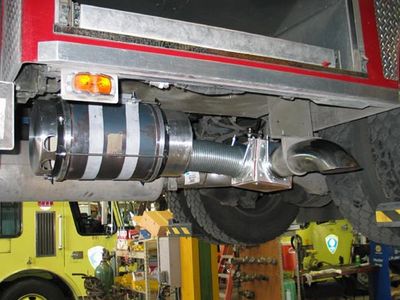FREQUENTLY ASKED QUESTIONS
What is Direct Source Filtration?
Does WARD DIESEL NO SMOKE void the engine warranty?
What is WARD DIESEL NO SMOKE 2?
Why the decision for the apparatus-mounted exhaust protection system (i.e. WARD DIESEL NO SMOKE)?
What is the frequency of filter changes on the WARD DIESEL NO SMOKE?
For the original NO SMOKE filters, there are a number of variables that affect the frequency of filter changes including timer setting, the age of the engine, the sulfur content of fuel, and the number of cycles. In general, most fire departments go 2-3 years between filter changes.
How is WARD DIESEL NO SMOKE automatic?
We move our vehicles from bay to bay. Are we locked into a bay with WARD DIESEL NO SMOKE?
What is the WARD DIESEL NO SMOKE over-ride switch?
For older apparatus, the WARD DIESEL NO SMOKE provides clean emissions on-scene with the flip of a switch. The WARD DIESEL NO SMOKE over-ride feature activates the filter system.
For ambulances in front of hospital doors, the system can be activated to keep the hazardous, nuisance soot from being breathed by hospital and emergency personnel, and patients. No more shutting off the vehicle in front of hospital doors, which is not a viable option in extreme weather conditions.
What does NFPA state regarding exhaust emissions?
What are the OSHA standards?
What is diesel exhaust?


With thousands of installations currently operating,
NO SMOKE has proven its capability and reliability to fire and rescue personnel throughout the world. We hope that you will be next to join the growing list of fire departments that have decided to protect their personnel with NO SMOKE.
